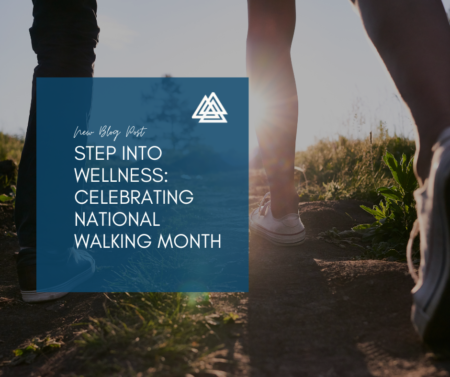 As the spring season blooms and the weather beckons us outdoors, there’s no better time to lace up our sneakers and embrace the joys of walking. May marks National Walking Month, a time to celebrate the numerous benefits of this simple yet powerful form of exercise. From improving physical health to boosting mental well-being, walking offers a host of advantages for individuals of all ages and fitness levels. In this blog post, we’ll explore the significance of National Walking Month, highlight workplace programs promoting walking, and discuss the benefits of wearing compression socks during walks.
As the spring season blooms and the weather beckons us outdoors, there’s no better time to lace up our sneakers and embrace the joys of walking. May marks National Walking Month, a time to celebrate the numerous benefits of this simple yet powerful form of exercise. From improving physical health to boosting mental well-being, walking offers a host of advantages for individuals of all ages and fitness levels. In this blog post, we’ll explore the significance of National Walking Month, highlight workplace programs promoting walking, and discuss the benefits of wearing compression socks during walks.
The Importance of National Walking Month:
National Walking Month is an annual observance dedicated to encouraging people to incorporate walking into their daily routines and reap the health benefits it offers. Walking is a low-impact activity that requires no special equipment, making it accessible to nearly everyone. Whether it’s a leisurely stroll around the neighborhood or a brisk walk during lunch breaks, every step counts towards improving overall health and well-being.
Promoting Walking in the Workplace:
Many workplaces recognize the importance of physical activity in promoting employee health and productivity. As a result, they implement various programs and initiatives to encourage walking among employees. Here are some examples of workplace programs promoting walking:
- Walking Challenges: Employers may organize walking challenges where employees track their steps and compete individually or in teams to reach specific goals. These challenges foster camaraderie, motivation, and healthy competition among coworkers.
- Walking Meetings: Instead of sitting in a conference room, some workplaces encourage walking meetings, where colleagues discuss business matters while taking a stroll outdoors. Walking meetings promote creativity, collaboration, and physical activity.
- Walking Clubs: Workplace walking clubs provide a supportive environment for employees to engage in regular walks together during breaks or after work hours. These clubs offer social interaction, accountability, and encouragement to stay active.
- Walking Workstations: Some progressive workplaces offer walking workstations, such as treadmill desks, that allow employees to walk while working. These setups promote movement throughout the day and reduce sedentary behavior.
Wearing Compression Socks for Walking:
Compression socks are specially designed garments that apply pressure to the legs, improving blood circulation and reducing swelling and fatigue. While commonly used by athletes and travelers, compression socks can also benefit individuals during walking activities. Here’s how wearing compression socks can enhance the walking experience:
- Improved Circulation: Compression socks help promote blood flow to the lower extremities, reducing the risk of muscle cramps and fatigue during walks.
- Enhanced Recovery: Wearing compression socks post-walk can aid in muscle recovery by reducing inflammation and soreness.
- Prevention of Leg Swelling: Compression socks can help prevent swelling and discomfort in the legs, particularly during longer walks or periods of prolonged standing.
- Support for Varicose Veins: Individuals with varicose veins or venous insufficiency may find relief from symptoms such as pain and heaviness by wearing compression socks during walks.
As we celebrate National Walking Month, let’s embrace the opportunity to incorporate more walking into our daily lives. Whether it’s through workplace programs promoting walking or by simply enjoying a leisurely stroll in the great outdoors, every step we take contributes to our overall health and well-being. Consider wearing compression socks to enhance your walking experience and maximize the benefits of this enjoyable and accessible form of exercise. Together, let’s step into wellness and make walking a cornerstone of our healthy lifestyle.
